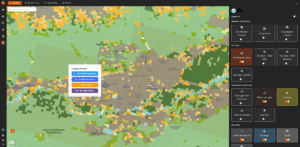From Emergency to Preparedness – How AI Powers Proactive Fire Management
Communities are moving from reactive declarations to proactive readiness. Here’s how AI, verified alerts, and machine learning help act before ignition.
Keywords: AI wildfire readiness, disaster planning, predictive analytics, FireSafe AI, emergency management
Why the Shift from Emergency to Proactive Preparedness
Traditional wildfire response has centered on declaring disasters after conditions deteriorate. That timeline leaves residents, utilities, and responders to play catch-up. Today’s climate reality—longer fire seasons, compounding drought, and more people in the wildland–urban interface—demands an operating model that moves decisions earlier in time.
How AI Enables Proactive Wildfire Readiness
1) Verified multi-signal alerts
AI fuses weather, fuels, satellite heat signatures, lightning telemetry, and crowdsourced reports to generate verified alerts, reducing noise and helping duty officers prioritize what matters.
2) Predictive risk and spread mapping for proactive management
Machine-learning models forecast ignition likelihood by location and hour, then project potential spread corridors given wind, slope, and fuel. The result: where and when to stage crews, trucks, and public messaging.
3) Dynamic resource orchestration
Instead of static plans, AI recommends adaptive assignments—moving strike teams, opening/closing feeders for utilities, and pre-positioning assets for red-flag windows.

What It Takes to Operationalize AI Readiness Drive Proactive Shift
Data & telemetry
- Weather forecasts (hourly), RAWS stations, lightning, and humidity trends
- Vegetation/fuel layers, recent burns, and live load moisture estimates
- Satellite thermal anomalies (e.g., VIIRS, MODIS) and camera networks
- Utility SCADA/AMDS signals (for grid-safety actions)
Decision playbooks
Convert policy into thresholds: when predicted risk exceeds X over Y hours, trigger staging Z, issue message M, and request mutual aid per pre-approved agreements.
Interagency coordination
Establish a shared operating picture and communications templates so local, county, state, and private partners move as one.
Operational & Community Benefits
- Faster, earlier actions: staging and mitigations before ignition reduce response times and exposure.
- Resource efficiency: dynamic tasking optimizes crews and equipment across peak-risk windows.
- Public trust: timely, verified alerts and clear messaging reduce confusion and over-warning.
- Safety: fewer surprises for field teams; better de-energization decisions for utilities during extreme events.
Inside the FireSafe AI Approach for Proactive Emergency Prepardness
FireSafe AI combines verified alerting, predictive risk modeling, and operational coordination in a single platform designed for municipalities and utilities.
Platform highlights
- Multi-signal verification: reduces false positives and prioritizes high-confidence alerts.
- Risk & spread forecasts: hourly predictions at neighborhood granularity.
- Automated playbooks: configurable triggers for staging, messaging, and mutual aid.
- Utility ops support: feeders, sectionalizing, and PSPS decision support.

“The goal isn’t just to know when risk spikes—it’s to make the right move an automatic one.”
Getting Started: A 10-Step Readiness Checklist
- Inventory data feeds (weather, fuels, detection, cameras, utility telemetry).
- Define ignition-likelihood thresholds that match policy and terrain.
- Map critical infrastructure and vulnerable populations.
- Codify staging playbooks (who, what, where, when).
- Pre-approve mutual aid and procurement for surge conditions.
- Set public messaging templates and translation workflows.
- Run table-top exercises on red-flag scenarios.
- Integrate AI outputs into CAD/dispatch and utility control systems.
- Measure outcomes (lead time, response time, avoided losses).
- Continuously retrain models with after-action data.
Demo available
FAQ
How is AI different from rules-based alerting?
AI learns patterns across many signals and adapts to local conditions, improving precision over static, one-size-fits-all thresholds.
Can FireSafe AI work with our current tools?
Yes. The platform is designed to ingest standard feeds and publish outputs to existing CAD, EOC, and utility operations systems via APIs.
What’s the first step?
Begin with a data & policy assessment to map signals, thresholds, and playbooks—then pilot predictive staging in one high-risk district.
